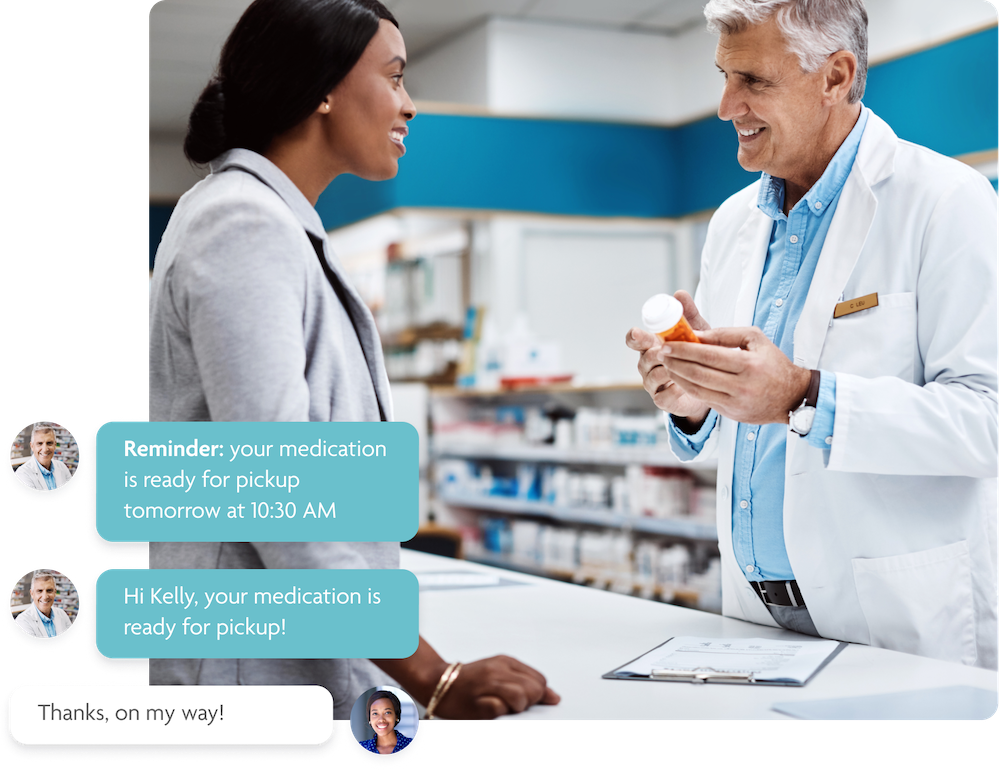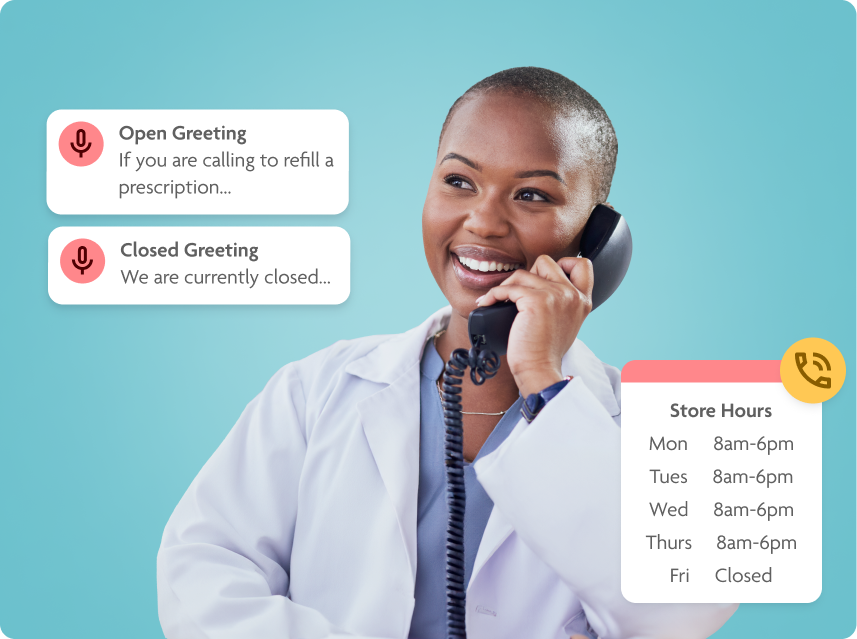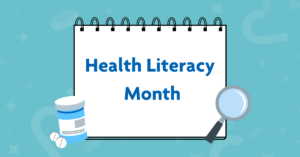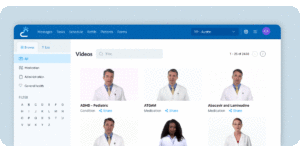Patient-centered care is one of the most important elements in establishing long-lasting relationships with the patient and strengthening the pharmacist’s professionalism in the pharmacy practice. To provide the best care and customer service possible, you have to start with the foundation – effective patient communication.
How do pharmacists communicate with patients?
There are two ways of communication:
1. Direct communication
This type of communication is achieved either by face-to-face interaction or by phone. Effective pharmacist-patient communication starts with an assessment of a patient’s health literacy, whether you’re offering individual medication counseling or teaching a wellness class.
Health literacy determines the degree to which patients can process health information and make informed decisions. Necessary health literacy skills include:
- Reading prescription labels and health education materials
- Understanding care and treatment directions
- Following diagnostic test instructions
- Completing health-related applications and forms
According to the Center for Healthcare Strategies, nearly nine out of 10 adults in the United States struggle with health literacy. While health literacy can vary based on age, location, education, and other demographics, it’s often independent of literacy in other industries or areas.
2. Indirect communication
This type of communication includes handouts, flyers, health education materials, mass messages, or one-on-one discussions via email or secure messaging. Recent trends in patient communication have encouraged a focus on developing lasting patient relationships and personalizing care. The rise of digital technology has made it crucial for pharmacists to offer multiple touch points for easy and quick communication so patients can connect with them online as well as offline.
5 quick tips on improving communication in pharmacy
The importance of using effective communication skills is critical to ensure that we are providing adequate assistance and advice to patients.
Here are five ways you can enhance your patient-provider communication skills.
1. Keep it short and simple
A study that involved 522 diabetic educators including pharmacists, nurses, and dietitians found that using “simple language” is the most common communication technique they use to deliver information to the patients. The study showed 93% of the participants use the simple language technique.
When counseling patients or caregivers, it’s important to limit and simplify the information you’re offering. One way to do this is by trying to break the information down into small chunks rather than providing them with everything at once and leaving them feeling overwhelmed.
A few other ways to simplify communication:
- Use plain language over medical jargon to make health information easier to understand
- Avoid medical abbreviations, especially when it comes to medications and conditions
- Offer specific examples rather than vague instructions (e.g. “Take medication two hours after eating” rather than “Take on an empty stomach”)
- Include visual aids in your conversations like diagrams, videos, or demonstrations of techniques and devices
The Centers for Disease Control and Prevention (CDC) offers Plain Language Resources so healthcare professionals can make health information easier to understand.
2. Focus on key points
According to the Rule Of Three, thoughts, ideas, and information are easier to remember in small groups and aid pattern recognition. Try to adopt this rule in patient conversations by limiting yourself to three main points. If you need to make more, offer written handouts they can refer back to later.
To identify key messages, ask patients what their top questions or concerns are and add them to other important information you need to share, such as prescription instructions.
During a longer discussion, find ways to reinforce your main points and assess patients’ knowledge at the end of each section or after introducing new information. And be sure to summarize them again at the end of your conversation.
3. Use the “teach-back” technique
Commonly used in education and healthcare, the “teach-back” method assesses a person’s knowledge of information given by having them restate it in their own words. Instead of saying “Do you understand?” or “Does that make sense?” have them demonstrate their knowledge with openers like:
- If you were to explain this to someone else, what would you say?
- Tell me what happens when you…?
- Show me how you would…
- What would you do if ____ happens?
The teach-back technique ensures that you deliver your message in an understandable way and highlights areas that you may need to revisit.
4. Utilize open-ended questions to encourage conversation
While closed-ended, yes/no prompts like “Do you have any questions?” are less likely to encourage a dialogue. Using more open-ended questions, such as “What questions do you have?” or “What would you like me to go over again or clarify?” solicits questions without putting anyone on the spot or making them feel like they didn’t understand the material.
Once the patient asks a question, use a systematic approach to find the answer, this includes gathering background information, determining the ultimate question, then searching and formulating your response.
If patients struggle to articulate their concerns, direct them to resources that will help them formulate the right questions to ask about their healthcare.
5. Provide easy-to-read materials
Remember, patients are likely to have varying levels of health literacy, so it’s important to back up any discussion with patient-friendly materials. Handouts you offer should define and explain any complex information and offer basic instructions or disease-specific care plans.
They should also include:
- Plain language with shorter, more familiar words and sentences
- Large, easy-to-read fonts and plenty of white space
- Visual aids, such as diagrams or simple illustrations
- Pharmacy contact information, including a phone number and email
It’s also helpful to provide educational materials in a range of multimedia formats, such as video and audio in form of QR codes or URL links. This can help you get information across easier and allows patients to choose what works best for their learning style.
Streamline communication with digital tools

Secure Chat
With secure chat in the Lumistry platform, patients can securely communicate with the pharmacy team at times most convenient for them. Patients can ask questions about medications, send new insurance cards, or seek advice—all within your pharmacy’s branded mobile app.
Interactive Voice Response (IVR)
Lumistry’s IVR system streamlines patient communication by efficiently directing patients to the right contact person or department within the pharmacy. With IVR voice prompts to guide patients through a series of menu options, they can quickly reach the appropriate pharmacy staff member or department, reducing wait times and ensuring that patients get to the right person the first time.

Enhance your pharmacy’s patient communication
Request your free demo today to learn how we can help elevate your patient experience with seamless communication at your pharmacy.



